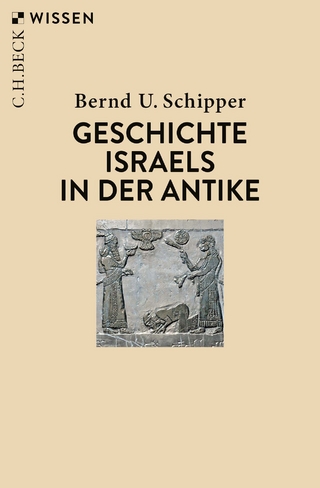
Trincheras Sites in Time, Space, and Society
Seiten
2018
|
3rd Revised edition
University of Arizona Press (Verlag)
978-0-8165-3933-8 (ISBN)
University of Arizona Press (Verlag)
978-0-8165-3933-8 (ISBN)
The hilltop archaeological sites scattered across the southwestern US and northwestern Mexico known as cerros de trincheras span almost three millennia, from 1250 BC to AD 1450. This volume integrates a remarkable body of new data representing a textbook-like array of current research issues and methodologies in the archaeology of the region.
The intriguing hilltop archaeological sites known as cerros de trincheras span almost three millennia, from 1250 BC to AD 1450. Archaeologists have long viewed them as a unitary phenomenon because they all have masonry architecture and occur mostly on low volcanic peaks. Scattered across the southwestern United States and northwestern Mexico, these sites received little comprehensive research until the 1980s. This first volume in the Amerind Studies in Archaeology series from the Amerind Foundation documents considerable variability among trincheras sites with respect to age, geographic location, and cultural affiliation.
This multi-author volume integrates a remarkable body of new data representing a textbook-like array of current research issues and methodologies in the archaeology of the region. Scholars from the United States and Mexico offer original research on trincheras sites in Chihuahua, Sonora, Arizona, and New Mexico. Scales of focus range from intensive intrasite sampling to the largest contiguous survey in the region. Authors incorporate spatial analyses, artifact studies, environmental and subsistence data, ethnographic analogs, ethnohistorical records, cross-cultural comparisons, archaeology, and archival resources.
The volume's discussions contribute innovative approaches to worldwide interpretations of landscapes marked by hilltop sites. Contributors present meticulous research arguing that many trincheras sites were primarily used for habitation and ceremonial rites, in addition to previously predominant views of them as defensive refuges. Because trincheras occupations date from the late preceramic era to shortly before Spanish contact, authors relate them to early forms of agriculture, the emergence of village life, the appearance of differentiated settlement systems, and tendencies toward political and ritual centralization.
Detailed maps and figures illustrate the text, and close-up aerial photographs capture the visual essence of the sites, highlighted by a section that includes color photographs and an essay by renowned photographer Adriel Heisey.
Contributors: Christian E. Downum; Paul R. Fish; Suzanne K. Fish; Robert J. Hard; Adriel Heisey; Stephen A. Kowalewski; Randall H. McGuire; Ben A. Nelson; John R. Roney; Judith Taylor; M. Elisa Villalpando; Joseph Vogel; Henry Wallace; David R. Wilcox; J. Scott Wood.
The intriguing hilltop archaeological sites known as cerros de trincheras span almost three millennia, from 1250 BC to AD 1450. Archaeologists have long viewed them as a unitary phenomenon because they all have masonry architecture and occur mostly on low volcanic peaks. Scattered across the southwestern United States and northwestern Mexico, these sites received little comprehensive research until the 1980s. This first volume in the Amerind Studies in Archaeology series from the Amerind Foundation documents considerable variability among trincheras sites with respect to age, geographic location, and cultural affiliation.
This multi-author volume integrates a remarkable body of new data representing a textbook-like array of current research issues and methodologies in the archaeology of the region. Scholars from the United States and Mexico offer original research on trincheras sites in Chihuahua, Sonora, Arizona, and New Mexico. Scales of focus range from intensive intrasite sampling to the largest contiguous survey in the region. Authors incorporate spatial analyses, artifact studies, environmental and subsistence data, ethnographic analogs, ethnohistorical records, cross-cultural comparisons, archaeology, and archival resources.
The volume's discussions contribute innovative approaches to worldwide interpretations of landscapes marked by hilltop sites. Contributors present meticulous research arguing that many trincheras sites were primarily used for habitation and ceremonial rites, in addition to previously predominant views of them as defensive refuges. Because trincheras occupations date from the late preceramic era to shortly before Spanish contact, authors relate them to early forms of agriculture, the emergence of village life, the appearance of differentiated settlement systems, and tendencies toward political and ritual centralization.
Detailed maps and figures illustrate the text, and close-up aerial photographs capture the visual essence of the sites, highlighted by a section that includes color photographs and an essay by renowned photographer Adriel Heisey.
Contributors: Christian E. Downum; Paul R. Fish; Suzanne K. Fish; Robert J. Hard; Adriel Heisey; Stephen A. Kowalewski; Randall H. McGuire; Ben A. Nelson; John R. Roney; Judith Taylor; M. Elisa Villalpando; Joseph Vogel; Henry Wallace; David R. Wilcox; J. Scott Wood.
Suzanne K. Fish is Curator of Archaeology at the Arizona State Museum and Professor of Anthropology at the University of Arizona. She is the co-author (with Paul R. Fish) of The Marana Community in the Hohokam World, published by the University of Arizona Press. Paul R. Fish is Curator of Archaeology at the Arizona State Museum and Professor of Anthropology at the University of Arizona. M. Elisa Villalpando holds the position of Investigadora with the Centro Regional Sonora of the Instituto Nacional de Antropologia e Historia.
| Erscheinungsdatum | 18.07.2018 |
|---|---|
| Reihe/Serie | Amerind Studies in Archaeology |
| Verlagsort | Tucson |
| Sprache | englisch |
| Maße | 152 x 229 mm |
| Gewicht | 500 g |
| Themenwelt | Sachbuch/Ratgeber ► Geschichte / Politik ► Vor- und Frühgeschichte / Antike |
| Geisteswissenschaften ► Archäologie | |
| ISBN-10 | 0-8165-3933-2 / 0816539332 |
| ISBN-13 | 978-0-8165-3933-8 / 9780816539338 |
| Zustand | Neuware |
| Haben Sie eine Frage zum Produkt? |
Mehr entdecken
aus dem Bereich
aus dem Bereich


